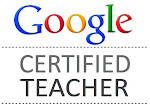Mrs. Yollis' class is learning about nonfiction.
Nonfiction writing is based on facts, real events, and real people. There are many helpful text features found in nonfiction writing. Some common text features are: headings, subheadings, captions, diagrams, time lines, maps, charts, and the glossary.
Below is a humdinger of a video made by Sheriff Yollis and Sheriff Salsich. They hope their video helps you greenhorns learn about about these important reading features!
Yee-haw!
Here it is on YouTube:
If YouTube is blocked, here's a Vimeo version:
The Nonfiction Trail from Jonah Salsich on Vimeo.
Are you reading a nonfiction book right now? If so, what is it?
What did you learn from a text feature?





















Dear Sheriff Yollis and Sheriff Salsich,
ReplyDeleteIt was mighty pleasurable to watch you read about them nonfiction books!
:-P
Sheriff Salsich, them whales are interesting criters all right. In fact ALL them books were interesting.
Sheriff Yollis, them desert critters were fasinating! But them diagrams really show that your teaching at the "Reading Roundup". Well I better go round up something to read.
Do you think them critters are fasinating?
Well, the cattle are getting crazy. Them varmits drive me crazy!
Sincerely,
Cowgirl Chloe ;-)
@ Cowgirl Chloe,
DeleteMuch obliged to you for your wonderful comment.
I do indeed believe them desert critters are interesting! I notice in the diagram that the critters have a whole heap of areas inside their burrow. I thought it was just a hole, but I was mistaken!
Have you ever learned anything from a text feature? Share out, little greenhorn!
Happy trails!
Sheriff Y♥llis
Dear Mrs Yollis,
ReplyDeleteI rather enjoyed you and Sheriff Salsich explaining all about the beauty of non fictions books with text features.
I have to say that a present I am reading a very powerful non fiction novel called Sold. The only text feature in this novel is the heading at the beginning of each chapter. However I have read non fiction books where its was filled with wonderful text features for example huge headings as well as a super glossary at the back of the book explaining more in depth a certain word.
For example I was reading all about sea creatures and came across this particular word. Really didn't have a clue what it meant so went to the glossary section and there it was "Mollusks." Now in the glossary it said this is a sea creature with a soft body and a very hard shell.
Thank goodness for these extra text features in books it sure does help.
From AA :)
Dear Mrs. Yollis and class,
ReplyDeleteYee-haw! What a post.
Non-fiction books are my favourites as they have information to help me learn. It seems the more we learn in life the more we realise how little we know. There always seems to be new discoveries to be made if we keep our eyes and minds open.
Recently I received a parcel from Canada. The contents included three stones a class thought contained either corallite or crinoid fossils. They asked me which I thought was the best choice. I looked at both options before explaining which of the two I preferred but I can be very curious at times.
I was suspicious the stones weren’t fossil bearing sedimentary rocks at all. I broke open the smallest rock and examined what was inside. I found the rocks were really made of small crystals. That suggested to me the stones might really be igneous (volcanic) rocks.
I went to my bookshelves and selected three of my rocks and minerals books and started searching. After spending a couple hours on research, I thought I had narrowed down to two possibilities then finally one.
With this idea, I then searched the internet to find images and information on the third choice and provided the class with links. With the help of non-fiction books, I was able to discover new information helping me find links for a post.
If you are interested in what I found, below is a link to post I made for them. Scroll down to the end to see photos of the inside of the stone and what I shared with Battalion Hawk Bloggers.
http://rossmannellcomments.edublogs.org/2013/04/15/something-special-from-canada/
@RossMannell
Teacher (retired), N.S.W., Australia
Dear Sheriffs Yollis & Salsich,
ReplyDeleteWhat a top video! Later on this term we'll be looking at non-fiction texts again, and we'll be kicking off with this video - what a great explanation.
I'm reading a number of non-fiction books as I plan my summer holiday, they are travel books and I love reading them. The photos of places we could visit are my favourite bit!
Thank you for sharing your expertise!
Mrs Monaghan
Mrs. Yollis,
ReplyDeleteThis is such a wonderful post that I cannot wait to share with my students! We are finishing up our Nonfiction unit before moving into Poetry and Plays. This video will be a fun way to review nonfiction text features. Thank you for sharing!
Miss Byron